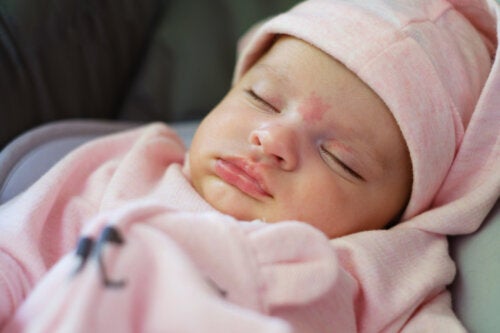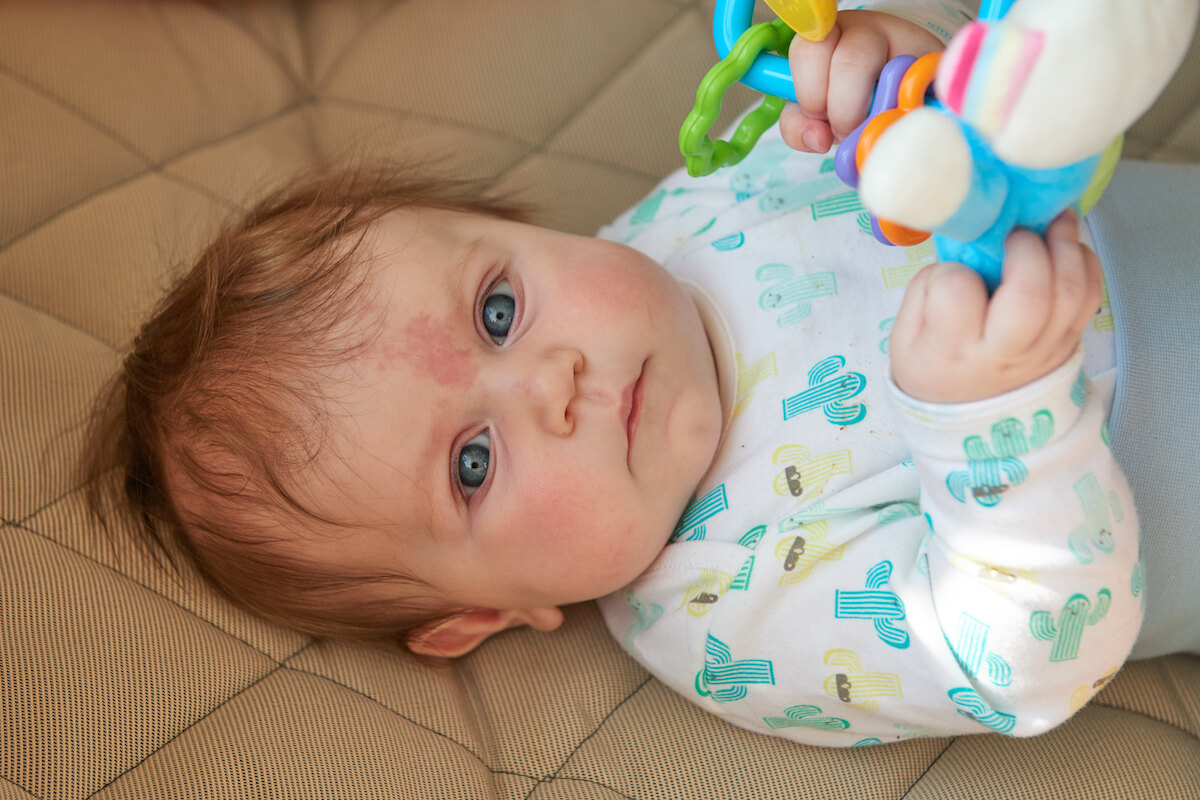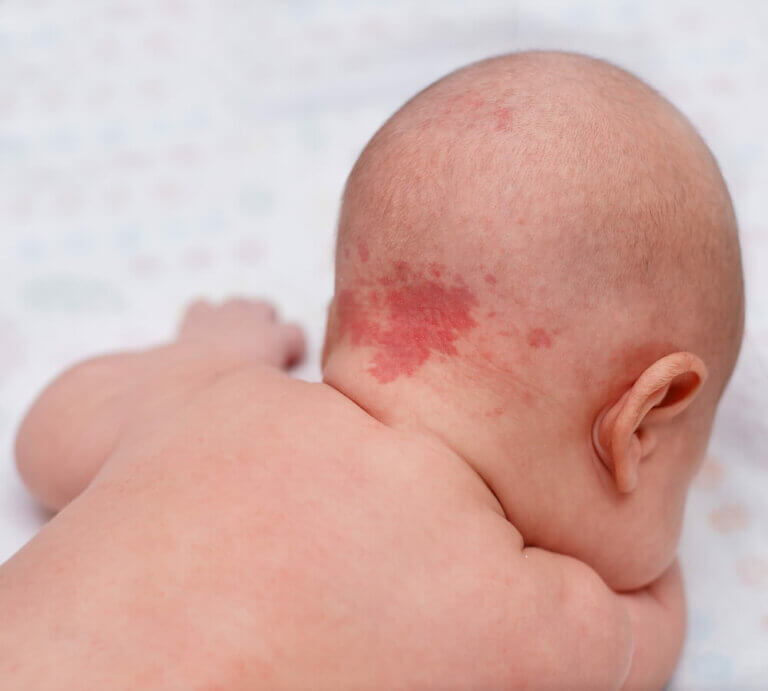Angel Kisses and Stork Bites: Spots on a Baby's Skin

Angel kisses and stork bites are very common birthmarks in newborns. They usually produce some concern in parents, although they shouldn’t be a cause for concern. Despite the aesthetics, they’re not harmful and don’t affect the newborn’s development.
Learn more about them below.
What are birthmarks?
Birthmarks are discolorations or hyperpigmentations that appear on the skin after birth or during the baby’s first few weeks of life. They’re generally benign and harmless lesions that don’t indicate an underlying condition.
They can occur anywhere on the body and differ in size, shape, appearance, and color. While some of them fade in their entirety over time, others may be permanent and become even larger.
Angel’s kiss and stork bites are the consequence of some malformations of the terminal blood vessels, i.e., those that reach the skin. These generate the characteristic spots on the surface of the newborn’s skin tissue.
Read also: Different Types of Birthmarks in Children
Angel’s kisses
Angel’s kisses are birthmarks located between the eyes of a newborn. Unlike the stork bite, which can remain on the skin, angel’s kisses fade rather quickly. They’re even named this way because, in ancient times, it was said that an angel approached the baby and blessed it with a kiss on the forehead region.
In most cases, angel’s kisses don’t require treatment for their management or removal.

Stork bites
Stork bites are a more common type of birthmark, and generally occur in fair-skinned newborns. The scientific name for this vascular lesion is nevus simplex or port-wine stain, but it’s also called salmon spots or patches and appears in more than 80% of infants.
The name stork bite comes from a popular legend that relates the spot to the moment when the bird carries the child in its beak to give it to its parents. This is because, in most cases, it’s located on the nape of the child’s neck.
These marks are characterized by being flat and presenting a dark or pale pink color. They generally disappear within the first year or two of life.
The most frequent locations of stork bites include the following areas:
- The lower part of the forehead
- Bridge of the nose
- Upper eyelids
- Back of the head or neck
- Upper lip
- Lower back
You may be interested in: Café-au-Lait Spots in Children
How are angel kisses and stork bites treated?
In general, stork bites usually disappear within the newborn’s first year. Occasionally, however, they may become visible again in the face of intense crying, such as a temper tantrum, or when it’s very hot.
In some cases, they can become permanent birthmarks that are noticeable into adulthood. However, if the stork bite occurs in an atypical location or if it doesn’t disappear during the first year, it’s best to consult your pediatrician. The same is true if there’s swelling, cracking, or any other signs or symptoms in the surrounding region.
Some recommendations to put into practice when birthmarks appear include the following:
- Don’t worry, as they’re benign lesions and tend to disappear during the baby’s development.
- Don’t use home remedies, lotions, creams, or ointments that aren’t indicated by a doctor.
- Consult your doctor if the marks on your child’s face are large or if they persist over time in order to rule out any other type of vascular lesion.

Are they preventable?
There’s no good evidence to support the exact cause of birthmarks on newborn skin. For this reason, there’s no way to prevent them.
Despite the myths, scientists haven’t been able to prove a causal relationship between birthmarks and a lack of monitoring or care by the mother during pregnancy.
Birthmarks in newborns and their evolution
Angel’s kisses and stork bites are birthmarks that aren’t contagious and aren’t dangerous for the person who suffers them.
Although they usually disappear after a year, if they remain or take on a different appearance over time, it’s best to consult a doctor.
All cited sources were thoroughly reviewed by our team to ensure their quality, reliability, currency, and validity. The bibliography of this article was considered reliable and of academic or scientific accuracy.
- Monteagudo B, Labandeira J, Acevedo A, Cabanillas M, León-Muiños E, Fernández-Prieto R, Toribio J. Mancha salmón: estudio descriptivo [Salmon patch: a descriptive study]. Actas Dermosifiliogr. 2011 Jan;102(1):24-7. Spanish. doi: 10.1016/j.ad.2010.06.019. Epub 2010 Dec 22. PMID: 21315858.
- Dohil MA, Baugh WP, Eichenfield LF. Vascular and pigmented birthmarks. Pediatr Clin North Am. 2000 Aug;47(4):783-812, v-vi. doi: 10.1016/s0031-3955(05)70240-6. PMID: 10943257.
- Diociaiuti A, Paolantonio G, Zama M, et al. Marcas de nacimiento vasculares como indicio de anomalías vasculares complejas y sindrómicas. Pediatr delantero . 2021; 9: 730393. Publicado el 7 de octubre de 2021 doi: 10.3389 / fped.2021.730393